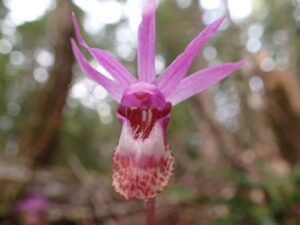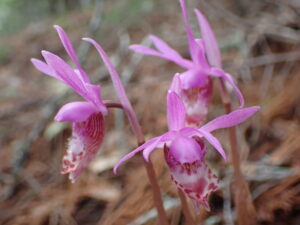Karen Wilkinson found a unique group of Coast Lilies. Lilium maritimum is only found in California north of San Francisco. A typical plant has as many as 13 nodding blossoms. But look what Karen discovered. She wrote, “I went to check in on Gentian on the ridge this morning and came across the most prolific Coast Lily plant I've ever seen. 21 open flowers, nine seed pods, and six buds that hadn't opened yet.” That would total 36 blossoms.
I sent Karen’s photo to botanist Peter Baye, and this was something he hadn’t seen before. He wrote, “That's not only exceptional, it's due to a deformation of the shoot tip during early flower bud development. Notice the flattening of the stem near the top? It's a fasciation. In this case, the ‘deformation’ of the shoot tip, or somatic mutation, doesn't affect the individual flowers. This is the only example of this I've ever seen in any native lily! Excellent find. Thanks! And thanks to Karen Wilkinson.”
Thanks to Karen for allowing me to share her photo with you here, and for showing us something so unusual!
Not much fog this morning and ironically it's cooler, temps in the 60's. There are passing clouds which always adds interest to sky watching!







